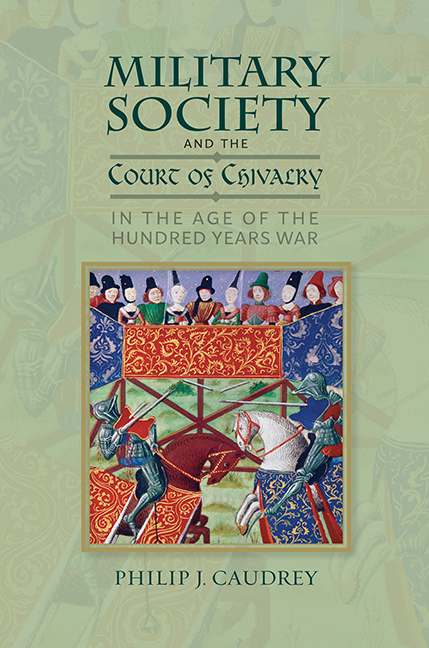24 results in Warfare in History

Merchant Crusaders in the Aegean, 1291-1352
-
- Published by:
- Boydell & Brewer
- Published online:
- 15 March 2024
- Print publication:
- 17 December 2015

The Battle of Yorktown, 1781
- A Reassessment
-
- Published by:
- Boydell & Brewer
- Published online:
- 23 March 2023
- Print publication:
- 15 July 2005

Edward III and the War at Sea
- The English Navy, 1327-1377
-
- Published by:
- Boydell & Brewer
- Published online:
- 14 March 2023
- Print publication:
- 19 May 2011

Renaissance France at War
- Armies, Culture and Society, c. 1480-1560
-
- Published by:
- Boydell & Brewer
- Published online:
- 07 March 2023
- Print publication:
- 20 November 2008

The Agincourt Campaign of 1415
- The Retinues of the Dukes of Clarence and Gloucester
-
- Published by:
- Boydell & Brewer
- Published online:
- 14 January 2023
- Print publication:
- 15 July 2021

Deception in Medieval Warfare
- Trickery and Cunning in the Central Middle Ages
-
- Published by:
- Boydell & Brewer
- Published online:
- 05 July 2022
- Print publication:
- 25 February 2022

Welsh Soldiers in the Later Middle Ages, 1282–1422
-
- Published by:
- Boydell & Brewer
- Published online:
- 11 June 2021
- Print publication:
- 20 August 2015

The Household Knights of Edward III
- Warfare, Politics and Kingship in Fourteenth-Century England
-
- Published by:
- Boydell & Brewer
- Published online:
- 24 March 2021
- Print publication:
- 19 March 2021

Elite Participation in the Third Crusade
-
- Published by:
- Boydell & Brewer
- Published online:
- 09 February 2021
- Print publication:
- 16 April 2021

Warfare in the Norman Mediterranean
-
- Published by:
- Boydell & Brewer
- Published online:
- 21 October 2020
- Print publication:
- 19 June 2020

Chivalry and Violence in Late Medieval Castile
-
- Published by:
- Boydell & Brewer
- Published online:
- 16 September 2020
- Print publication:
- 21 November 2020

Roger of Lauria (c.1250–1305)
- Admiral of Admirals
-
- Published by:
- Boydell & Brewer
- Published online:
- 24 October 2019
- Print publication:
- 18 October 2019

The Black Prince and the Grande Chevauchée of 1355
-
- Published by:
- Boydell & Brewer
- Published online:
- 17 October 2019
- Print publication:
- 16 November 2018

Military Communities in Late Medieval England
- Essays in Honour of Andrew Ayton
-
- Published by:
- Boydell & Brewer
- Published online:
- 17 July 2019
- Print publication:
- 18 May 2018

Military Society and the Court of Chivalry in the Age of the Hundred Years War
-
- Published by:
- Boydell & Brewer
- Published online:
- 21 June 2019
- Print publication:
- 18 January 2019

The Battle of Crécy, 1346
-
- Published by:
- Boydell & Brewer
- Published online:
- 25 October 2017
- Print publication:
- 15 February 2005

Scotland's Second War of Independence, 1332–1357
-
- Published by:
- Boydell & Brewer
- Published online:
- 20 April 2017
- Print publication:
- 21 October 2016

Henry of Lancaster's Expedition to Aquitaine, 1345-1346
- Military Service and Professionalism in the Hundred Years War
-
- Published by:
- Boydell & Brewer
- Published online:
- 05 July 2016
- Print publication:
- 21 June 2016

The Norman Campaigns in the Balkans, 1081-1108 AD
-
- Published by:
- Boydell & Brewer
- Published online:
- 05 October 2014
- Print publication:
- 17 July 2014

Chivalry, Kingship and Crusade
- The English Experience in the Fourteenth Century
-
- Published by:
- Boydell & Brewer
- Published online:
- 05 May 2013
- Print publication:
- 16 May 2013

